The situation of the real estate market of Ibiza has been unusual since the burst of the housing bubble that took place on the island. The Parliament has recently approved a restriction to the law on construction on the Balearic Islands, especially on Majorca and Ibiza. The new Ley del Suelo prohib ...
Balearic Islands: the high-end market is successful
The situation of the real estate market of Ibiza has been unusual since the burst of the housing bubble that took place on the island.
The Parliament has recently approved a restriction to the law on construction on the Balearic Islands, especially on Majorca and Ibiza. The new Ley del Suelo prohibits the building of new homes in ten areas in Majorca and in five areas in Ibiza – for example in Cap Llibrell, Cap Llentrisca, Cala Comte and Cala Bassa.
A recent study conducted by the University of Balearic Islands has shown that there are homes for 2.1 million people, twice the present population living on the archipelago. According to the results, 48% of those houses are vacant at the moment, due to the real estate bubble that made residential developments increase excessively from 2001 to 2008. Vacant homes are above all secondary residences that are located in Menorca and Majorca.
Víctor Beltrán – the president of the college of architects – claimed that forbidding construction on plots of land that have a 20% slope is a fair measure, but it would be advisable to decide on a case-by-case basis.
Real estate professionals say that this almost-complete halt of building activities will make house prices rise. The economic crisis has not caused drastic changes on the segment of luxury homes; on the contrary, the number of international clients on the island has increased; indeed, investing in the housing market abroad still represents a safe form of investment.
Buying in Ibiza means having the Caribbeans within reach, but besides the intact nature and white beaches, there are good infrastructures, such as roads that were asphalted only 20 years ago. The immoderate development of buildings has produced some “eco-monsters” – buildings that are not compatible with the surrounding environment – but the island has managed to preserve some green oases and is increasingly chosen by wellbeing-holiday lovers who like staying in spas and practising yoga meditation. That is the reason why Eivissa is also a privileged destination for alternative tourism and not just for night-life lovers and holidaymakers who want to enjoy endless fiestas.
From 2003 to 2006, prices increased along with the building of new residential units. An increasing number of international clients – coming above all from Europe – showed their interest in purchasing real estate properties on the Balearic Islands. Today, the number of Spanish investors is decreasing, but the number of buyers coming from Italy, the UK, The Netherlands and France is stable.
Residential properties prices in Ibiza are 20-30% lower than in the past, but investors are not interested in secondary homes. The prices of luxury villas, instead, are still high: they range from 2 to 20 million euros. They depend on the position of the villa – for example if it is located in an area that has been declared ineligible for building development and has direct access to the sea – on the view it offers and on the square metres it covers.
Some other high-quality villas can cost about 750 thousand euros. On the island, it is also possible to buy standard-level apartments and terraced houses: the adosados-jaula as they are called in Ibiza.
The price of two/three-roomed condo apartments with swimming pool and located close to the beach ranges from 200 thousand to 350 thousand euros. Detached houses cost 490 thousand euros approximately. The most expensive real estate properties are situated in the south, where there are the best known holiday resorts: Cala Conta, Salines, Talamanca and Den Bossa). Less expensive apartments can be found in the north, in the area surrounding Santa Eularia.
Sant Antoni is considered the mecca of low-cost tourism. The price to rent small apartments for 4 people near the location of “noche brava” ranges from 550 euros during low season to 800 euros in high season.
Read more about the Spanish real estate market by clicking on the following link:
Related Insights
-
Balearic Islands: the high-end market is successful
Real Estate Listings
For sale Other (Commercial), Spain, Islas Baleares, Palma de Mallorca, Virgilio 27, Club Náutico
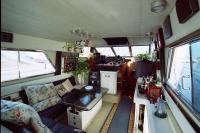
For sale
Other (Commercial)
75 m²
For sale Business, Spain, Islas Baleares, Algaida, Carrer de l'Esglesia 3
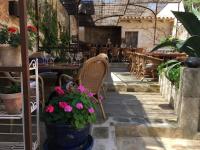
For sale
Business
900 m²
For sale Bar/Restaurant/Nightclub, Spain, Islas Baleares, Ibiza, calle de la virgen
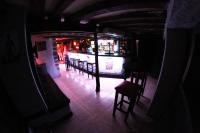
For sale
Bar/Restaurant/Nightclub
100 m²
For sale Business, Spain, Islas Baleares, Ibiza, cala san juan

For sale
Business
120 m²
For sale Bar/Restaurant/Nightclub, Spain, Islas Baleares, Palma de Mallorca, carretera arenal 8
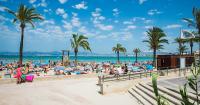
For sale
Bar/Restaurant/Nightclub
300 m²
For sale 4 Bedrooms, Spain, Islas Baleares, LLUCMAJOR, maioris decima
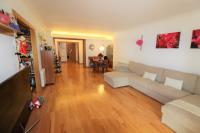
For sale
4 Bedrooms
217 m²
For sale 2 Bedrooms, Spain, Islas Baleares, Palma de Mallorca, 26 Calle Despuig
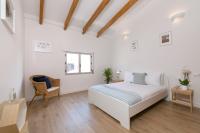
For sale
2 Bedrooms
78 m²
For sale Bar/Restaurant/Nightclub, Spain, Islas Baleares, Ibiza, Santa Eularia
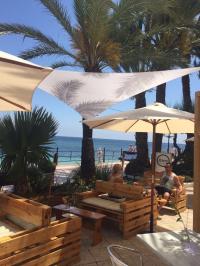
For sale
Bar/Restaurant/Nightclub
150 m²
For sale 3 Bedrooms, Spain, Islas Baleares, Palma de Mallorca, Acapulco 18. Sometimes Palma de Mallorca

For sale
3 Bedrooms
125 m²
For sale 2 Bedrooms, Spain, Islas Baleares, Palma de Mallorca, paseo de illetas 12 4º izq
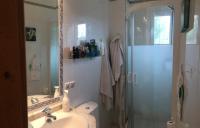
For sale
2 Bedrooms
92 m²
